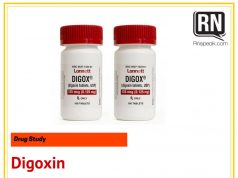Ketorolac tromethamine is known as Ketorolac is a type of non-steroidal anti-inflammatory drug which is widely used as an analgesic. On November 30, 1989, this drug was been approved by the FDA and introduced in the market by Syntex as Toradol. Aside from its analgesic effect, it is also used as an anti-inflammatory that inhibits leukotriene and prostaglandin synthesis. This drug should only be used on a short term basis especially in the treatment of pain (up to five days). It is also used for ophthalmic relief of ocular itching brought by seasonal conjunctivitis and in cases of postoperative inflammation after cataract surgery.
Available forms:
Ketorolac Tromethamine is available in three forms:
Injection – 15, 30 mg/mL, Ophthalmic solution – 0.4% (LS), 0.5% and Tablets – 10 mg
Dosages:
Ketorolac is considered a potent non-steroidal anti-inflammatory drug with various adverse effects.
A. Adults
- Oral
Transfer to oral: 20 mg PO as first dose for patients who received 60 mg IM or 30 mg IV as a single dose or 30 mg multiple-dose, followed by 10 mg every four to six hours; do not exceed 40 mg/24 hr.
2. Ophthalmic
- Acular LS: 1 drop qid prn for stinging and burning; use this drug up to 3 days after surgery.
- Itching due to allergic conjunctivitis: 1 drop qid
- Acular, Acular PF: For cataract surgery, begin by 1 drop qid 24 hours after and continue for two weeks.
3. Parenteral
- Single-dose treatment: 60 mg IM or 30 mg IV
- Multiple-dose treatment: 30 mg IM or IV every six hours to a maximum 120 mg/day.
B. Geriatric patients 65 years old and above, patients who weigh less than 50 kg, and patients with renal impairment
1. Oral
Transfer to oral: 10 mg PO as first dose for patients who received 30 mg IM or 15 mg IV single dose or 15 mg IV or IM in multiple-dose, then 10 mg PO every four to six hours; do not exceed using this drug 40 mg/24 hr.
- Parenteral
- Single dose treatment: 30 mg IM or 15 mg IV
- Multiple dose treatment: 15 mg IM or IV every six hours to a maximum of 60 mg/day
C. Pediatric patients: Ketorolac’s safety and efficiency are not yet proven.
Drug Interactions:
It has an increased risk of nephrotoxicity when used with other nephrotoxins (e.g. cyclosporine); increased risk of bleeding when used with anticoagulants (e.g. warfarin).
Pharmacokinetics:
When ketorolac is given orally, the onset varies; the peak is usually 30 to 60 minutes for six hours duration of the drug. If this drug is given through IM or IV, the onset is 30 minutes; the peak is 1-2 hours for six hours duration.
The distribution of this drug crosses the placenta and enters breast milk. The excretion is the same as other drugs i.e. through urine.
Contraindications and Cautions:
- This drug should be used cautiously with patients who have impaired hearing, allergies, and cardiovascular/gastrointestinal/hepatic conditions.
- It is contraindicated during labor and delivery and mothers who give breastfeeding to their babies.
- Contraindicated to patients who wear soft contact lenses.
- Contraindicated to patients who use NSAIDs simultaneously.
- Contraindicated to patients who have a history of gastrointestinal bleeding or peptic ulcer.
- Contraindicated to patients who are suspected or confirmed cerebrovascular bleeding.
Adverse Effects:
- Respiratory: rhinitis, hemoptysis, dyspnea
- GI: GI pain, diarrhea, vomiting, nausea
- CNS: dizziness, fatigue, insomnia, headache
- Hematologic: neutropenia, leukopenia, decreased Hgb or Hct, bone marrow depression
- Dermatologic: sweating, dry mucous membrane, pruritus
Nursing Interventions/Considerations:
- Don’t forget to assess first the patient before administering this drug: know the history (e.g. allergies, renal impairment, etc.) and physical condition of the patient (reflexes, ophthalmologic and audiometric evaluation, orientation, clotting times, serum electrolytes, etc.)
- In case of hypersensitivity, be sure that emergency equipment is available.
- Drug vials should be protected from light.
- To maintain serum levels and control pain effectively, administer it every six hours.
- Report any signs of itching, swelling in the ankles, sore throat, easy bruising, etc.
Source: 2009 Lippincott’s Nursing Drug Guide







